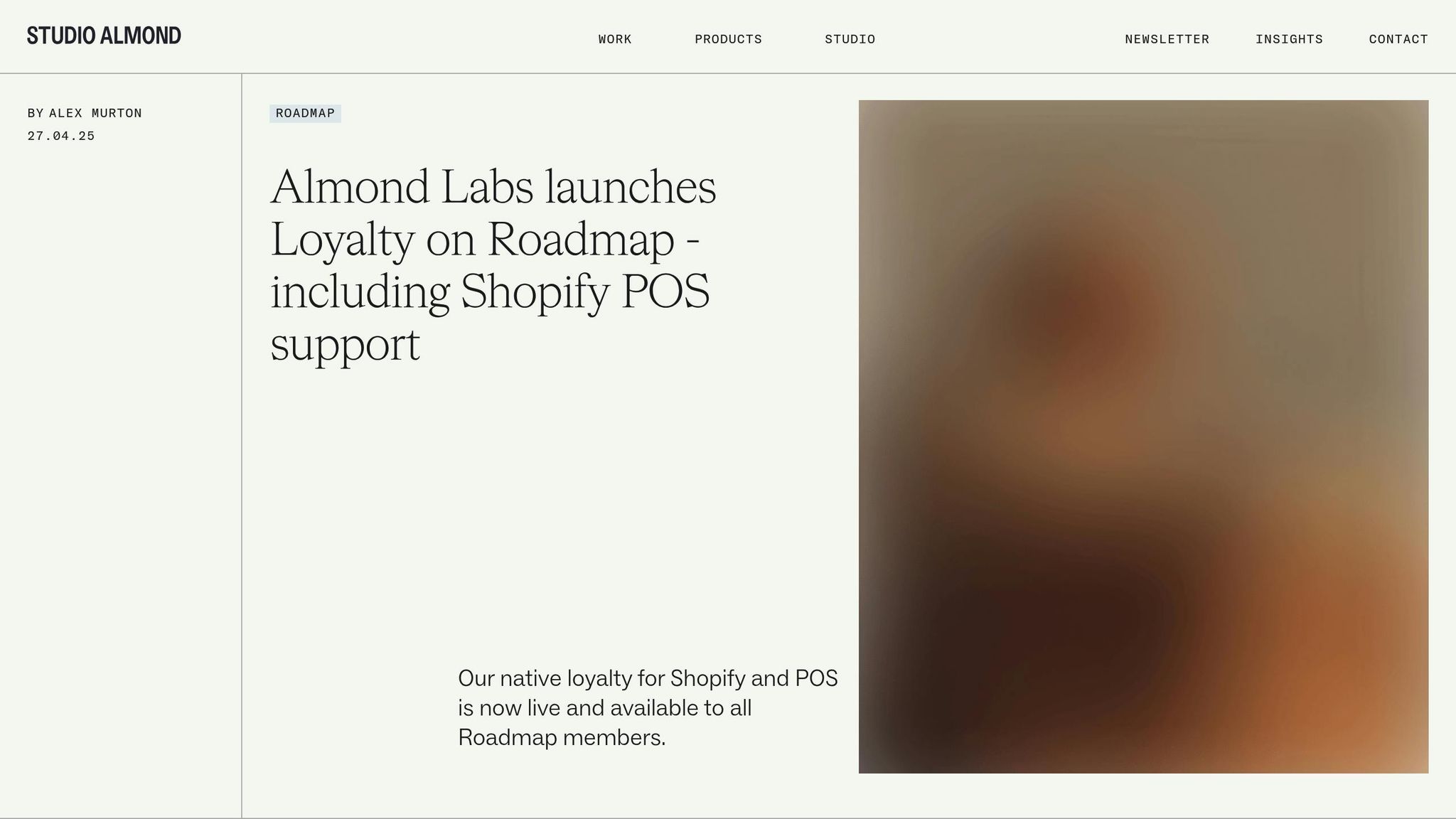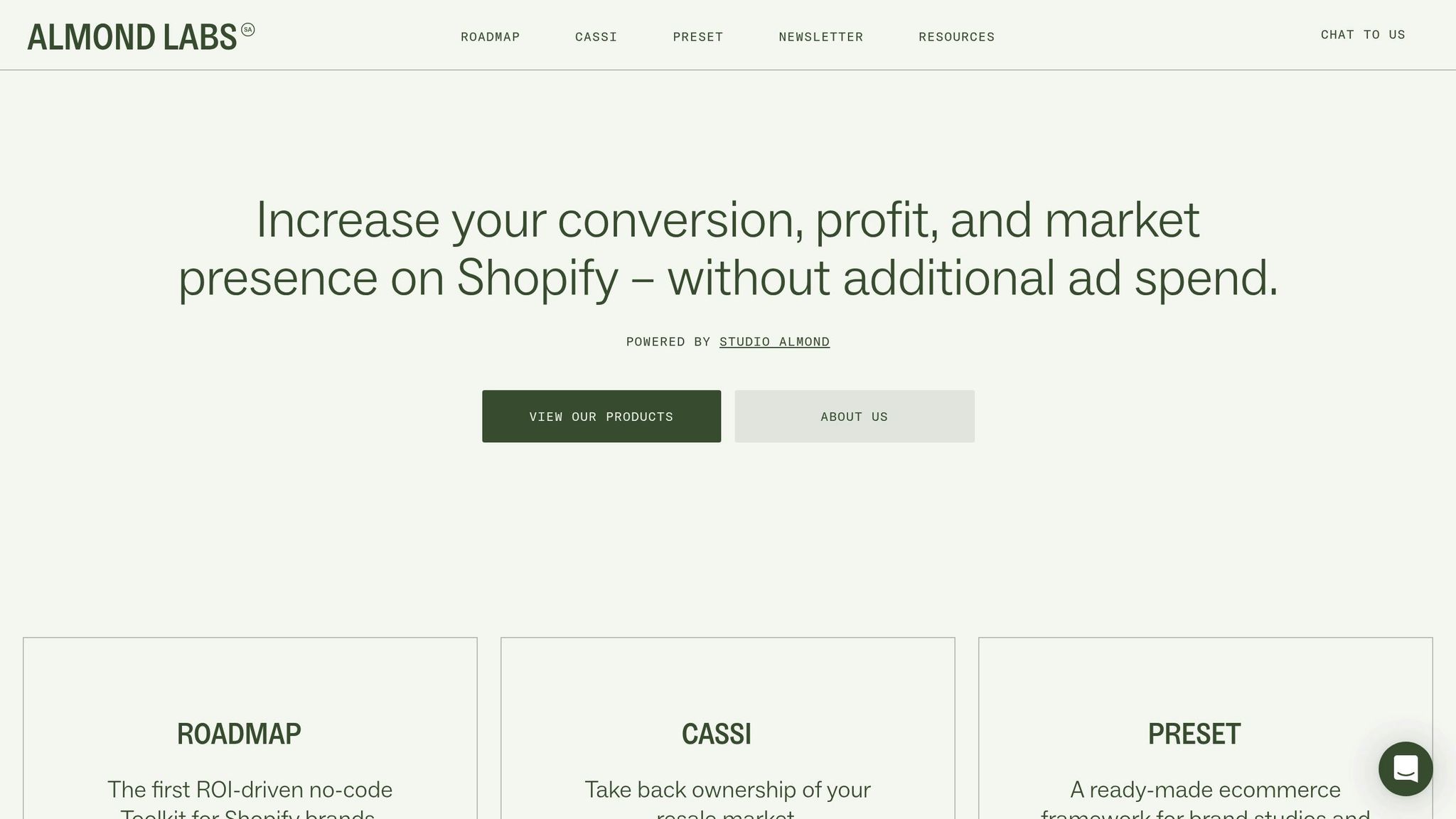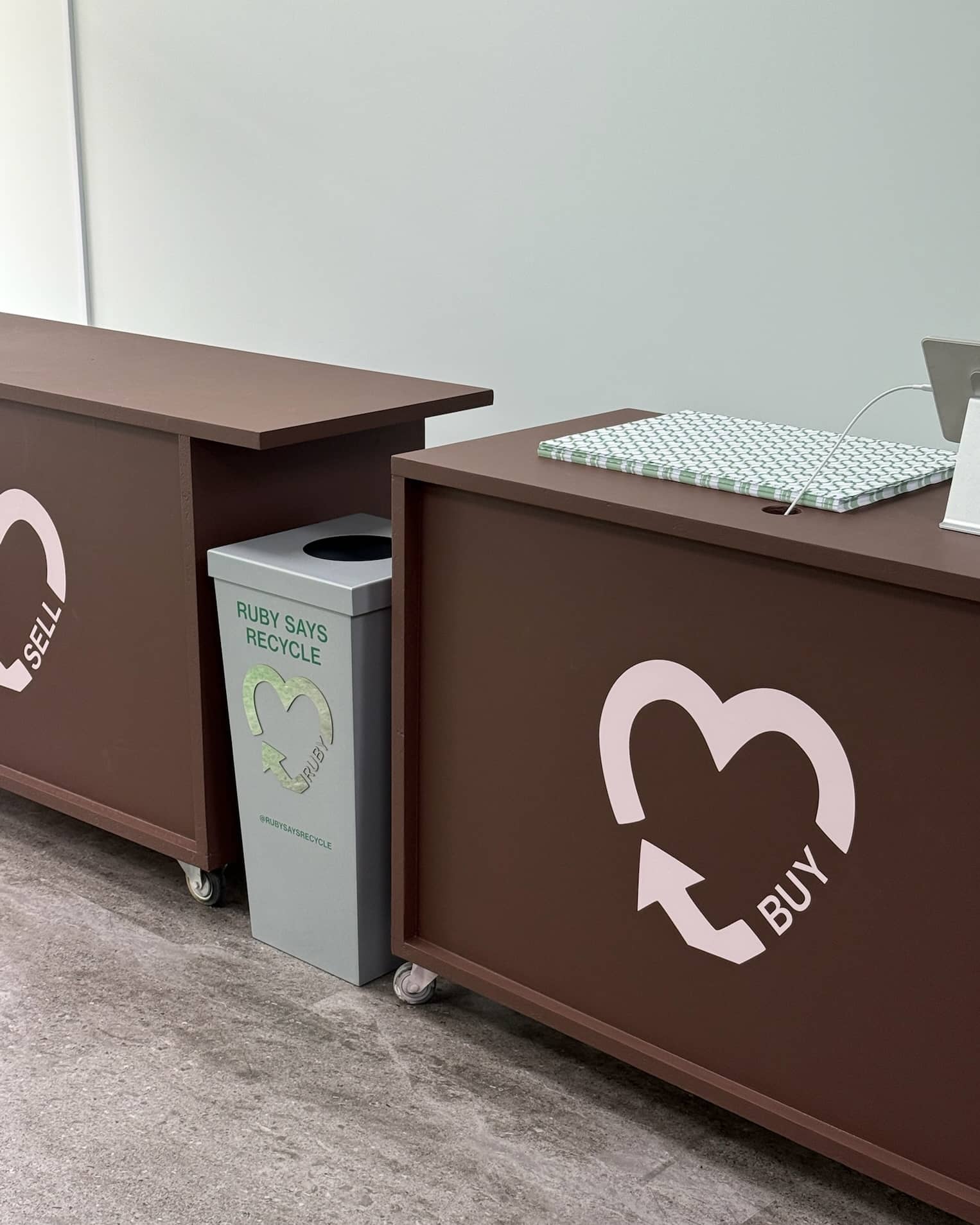
Retaining customers is far cheaper than acquiring new ones - by 5 to 25 times. Plus, increasing retention by just 5% can boost profits by 25% to 95%. For New Zealand e-commerce brands, this is even more critical. Returning customers spend 67% more than new ones. However, many businesses overinvest in acquiring new customers and neglect their existing base.
Key Takeaways:
- Retention Metrics: Help identify loyal customers, those at risk of leaving, and areas to improve.
- Customer Segmentation: Dividing customers into groups (e.g., by behaviour, location, or value) ensures more personalised marketing and better results.
- Core Metrics to Track:
- Customer Retention Rate (CRR): Measures loyalty over time.
- Repeat Purchase Rate (RPR): Tracks how often customers return.
- Customer Lifetime Value (CLV): Predicts the total revenue a customer generates.
Why It Matters in NZ:
- Smaller market size makes returning customers essential.
- Geographic and cultural segmentation (e.g., Auckland vs. Wellington preferences) can refine strategies.
This guide explains how to track retention metrics by segment, use tools like Roadmap and Cassi, and implement strategies like personalised loyalty programmes and targeted campaigns to drive growth.
Key metrics and KPIs for retention marketing
Core Retention Metrics to Track by Segment
Understanding segment-based metrics offers a clear picture of how well you’re connecting with your customers. For New Zealand e-commerce brands, keeping an eye on these three key retention metrics can reveal a lot about the health of your customer relationships.
Customer Retention Rate (CRR)
Customer Retention Rate shows the percentage of customers who stick with your brand over a given period. It’s one of the best indicators of customer loyalty and reflects how effective your retention strategies are across various segments[4][8]. The formula to calculate CRR is:
CRR = ((E – N) / S) x 100%
- E: Customers at the end of the period
- N: New customers acquired during the period
- S: Customers at the start of the period
For example, Netflix boasts retention rates exceeding 90%, thanks to its ever-evolving content library and seamless user experience. Similarly, Amazon Prime achieves retention rates between 93% and 96%[8]. Breaking down CRR by customer behaviour or acquisition channel can help you fine-tune your marketing spend and create more focused retention campaigns.
Repeat Purchase Rate (RPR)
Repeat Purchase Rate tells you the percentage of customers who come back for more, making it a solid indicator of customer satisfaction and how well your products resonate[5][8]. The formula is straightforward:
RPR = (Number of Repeat Customers / Total Number of Customers) x 100
Different segments can show varying purchase patterns. For instance, Sephora’s Beauty Insider loyalty programme has driven repeat purchase rates above 80% annually by offering tailored rewards and exclusive perks[3]. Similarly, Dollar Shave Club’s subscription model ensures repeat purchase rates also exceed 80%, leveraging recurring revenue strategies[8]. While CRR and RPR measure customer engagement in the short term, CLV provides a broader, long-term perspective.
Customer Lifetime Value (CLV)
Customer Lifetime Value estimates the total revenue a single customer could bring to your business over the course of their relationship with your brand[4][6][8]. It’s a crucial metric for making informed decisions about sales, marketing, and customer support. The formula is:
CLV = Average Purchase Value x Average Purchase Frequency x Average Customer Lifespan
Segmenting CLV can highlight your most valuable customer groups. For example, Amazon’s Prime members have an estimated CLV of over $3,000, compared to about $700 for non-Prime customers[8]. Studies also suggest that customers with an emotional bond to a brand have a 306% higher CLV[7]. These insights can guide you on where to focus your resources and which segments deserve more attention.
Customer Segmentation Methods for Retention Analysis
To improve customer retention in New Zealand’s e-commerce market, segmenting your audience into actionable groups is key. Here are three effective methods you can start using today.
RFM (Recency, Frequency, Monetary) Analysis
RFM analysis breaks down your customer base by asking three simple but powerful questions: When was their last purchase? How often do they buy? How much do they spend? This approach helps pinpoint your most valuable customers quickly. For instance, Tata CLiQ Luxury used RFM analysis to categorise its customers into 10 distinct groups, enabling tailored messaging that boosted revenue by an impressive 159% [11]. Similarly, Black Friday FM leveraged RFM-based personalisation to achieve a 10% increase in app engagement [11]. Even a basic spreadsheet can help you identify key segments like “Champions” or “At-Risk” customers, allowing you to focus your retention efforts where they’ll have the most impact.
Behavioural Segmentation
While RFM looks at purchase history, behavioural segmentation digs into how customers interact with your brand. This includes analysing browsing habits, cart abandonment rates, email engagement, and product preferences. A great example is Starbucks, which uses behavioural data to send targeted emails and push notifications, encouraging regular morning customers to make additional purchases [10]. Behavioural insights can also reveal patterns, such as customers who prefer sustainable products responding better to eco-friendly messaging, while premium buyers are drawn to exclusive offers. By grouping users into activity levels - like active, moderate, or passive - you can refine your communication. Adding layers such as location or demographic information can make your campaigns even more personalised.
Geographic and Demographic Segmentation
Geographic segmentation focuses on where customers are located, while demographic segmentation considers factors like age, gender, income, and lifestyle. For example, McDonald’s adapts its menu to regional tastes, offering the McAloo Tikki burger in India to cater to local preferences [1]. Similarly, Augustinus Bader targets women aged 30 to 50 with higher incomes, tailoring its messaging to anti-ageing and skin rejuvenation needs [1]. Combining geographic and demographic data allows you to create micro-segments. For instance, Wellington customers in their 30s might respond differently to promotions than Queenstown customers in their 50s. Incorporating local events, weather patterns, and cultural factors can make your campaigns even more relevant. Many successful brands mix these segmentation methods - using RFM to identify customer value, behavioural insights to understand preferences, and geographic and demographic details to fine-tune their approach.
Retention Improvement Strategies by Segment
To boost customer retention, it's essential to develop strategies tailored to the needs of each customer segment.
Personalised Loyalty Programs
Customised loyalty programmes can work wonders for retention. Take Starbucks, for example - they use RFM segmentation to reward their most valuable customers with exclusive perks, while offering timely discounts to others [9]. Similarly, Sephora's Beauty Insider programme not only rewards loyalty but also collects zero-party data to provide personalised product recommendations [12][9]. Jewellery brand Astrid & Miyu takes a tiered approach, offering early sale access to customers in their Silver and Gold tiers, which require a minimum spend of £200 [13].
"Loyalty segmentation aims to enhance customer loyalty and maximise customer lifetime value. In addition to the primary objective, it also has secondary goals, including optimising resource allocation, discovering valuable insights through data analysis, and fostering involvement and gratification."
– Paweł Dziadkowiec, Loyalty Strategy Consultant, ex-BP [12]
By analysing data like purchase histories, loyalty programme participation, and brand engagement, you can create detailed customer personas. These personas can guide your reward structures and help design retention campaigns that meet the specific needs of each segment.
Targeted Retention Campaigns
Retention campaigns that are tailored to specific customer groups can significantly improve results. For instance, Grind targets customers who cancel subscriptions with automated emails, which now generate some of their highest revenues per recipient. This approach has helped them achieve 71% of their revenue from repeat customers [14].
Bantoa, on the other hand, uses segmented personalisation to achieve push notification click-through rates between 58.7% and 91.9% [2]. To replicate this success, use customer profiles to craft messages that resonate. For example, offer discounts on eco-friendly products to sustainability-focused shoppers or give premium customers early access to exclusive items. Adjust the timing and frequency of your campaigns based on each segment's activity patterns.
"You can optimise loyalty grouping efforts and drive better customer churn, retention, and engagement rates by tailoring marketing approaches, using preferred channels, and measuring key performance indicators."
– Paweł Dziadkowiec, Loyalty Strategy Consultant, ex-BP [12]
Instead of a one-size-fits-all approach, focus on the communication channels that each segment prefers.
Multi-Channel Engagement Tactics
Expanding on personalised campaigns, multi-channel strategies can take customer engagement to the next level. For example, Williams Sonoma integrated Instagram with online shopping during the pandemic, leading to e-commerce making up 70% of their business [16]. Starbucks has also mastered this approach. Their app allows customers to order ahead, redeem rewards, send gift cards, and check balances seamlessly, making it a cornerstone of their loyalty programme [16].
Technology can enhance these efforts even further. Ulta's GLAMlab, a virtual try-on tool powered by augmented reality, has boosted engagement sevenfold since the pandemic began [16]. Similarly, Kendra Scott’s AR tool lets shoppers virtually try on earrings before buying [16]. Personalised in-app messages also show impressive results, with retention rates of 61%–74% within 28 days compared to 49% for generic broadcast campaigns [2].
"It shouldn't matter how or where the customer seeks their service resolution. You should be able to rise to the challenge and meet them anywhere they want."
– Jeff Nicholson, Global Head CRM Product Marketing of Pegasystems [15]
Focus on the channels that deliver the best results for each segment. McDonald's, for example, is heavily investing in its MyMcDonald's loyalty programme, which uses customer data to provide personalised order suggestions and deals across kiosks, mobile apps, and drive-thru digital menu boards [16]. Tools like Almond Labs' Roadmap can also help. This no-code Shopify toolkit enables you to create loyalty programmes, bundles, and promotions that maintain personalisation across all customer touchpoints.
sbb-itb-f46a14b
Tools and Technologies for Segment-Based Retention
For e-commerce brands, relying on basic analytics isn’t enough anymore. To thrive, businesses need tools that provide actionable insights and automate retention campaigns tailored to specific customer segments. Modern platforms make these strategies not only possible but seamless.
Using Roadmap for Retention Campaigns

Almond Labs' Roadmap offers a no-code platform designed to elevate Shopify retention campaigns. With this tool, you can build personalised loyalty programmes aimed at different customer segments. Whether it's offering exclusive perks to your most loyal customers or enticing inactive shoppers with targeted discounts, Roadmap makes it easy.
One standout feature is the campaign builder, which enables you to automate workflows based on customer behaviours. For example, you can create product bundles for customers who frequently buy complementary items or offer a gift-with-purchase to segments showing reduced activity. The platform’s tag library allows for precise segmentation, ensuring that your messages hit the mark.
What sets Roadmap apart is its seamless integration with Shopify. By eliminating the need for multiple platforms, it streamlines the entire process, making it easier to maintain personalisation across all customer touchpoints.
Next, let’s look at how resale engagement tools can deepen retention strategies.
Using Cassi for Resale Customer Retention

Beyond automation, Cassi adds a creative twist to retention by turning resale into an engagement opportunity. This tool helps extend customer lifetime value by creating a circular shopping experience - ideal for fashion and lifestyle brands where customers regularly refresh their wardrobes.
Cassi empowers brands to reclaim control of the resale market by offering customers a structured way to sell back or consign their items. This creates an additional touchpoint, keeping customers connected long after their first purchase. Through buy-back credits that encourage new purchases and consignment options that keep users within your brand’s ecosystem, Cassi fosters ongoing engagement. It’s particularly appealing to environmentally conscious shoppers who value sustainable practices.
Advanced Analytics Implementation
To maximise the potential of these tools, advanced analytics is key. For example, cohort analysis - which can improve marketing ROI by 20-30% - uncovers retention trends across customer groups [18]. This allows brands to fine-tune their strategies for each segment.
Predictive modelling takes it a step further by identifying customers at risk of churning. By analysing metrics like purchase frequency, engagement levels, and browsing behaviour, these models flag high-risk segments, enabling timely interventions.
"Advanced analytics isn't just about more data - it's about better insights that lead to confident action." - Tom Goodwin, Marketing Consultant [18]
Modern analytics platforms also offer tools like real-time reporting and multi-touch attribution modelling, which help evaluate which retention efforts are driving results. The most effective systems create closed-loop reporting, tracking customers from their first interaction to repeat purchases and beyond [18].
When choosing analytics tools, look for platforms with robust segmentation features and the ability to integrate data from multiple sources like your online store, CRM, email campaigns, and digital ads [17]. Together, these technologies form the backbone of a data-driven, customer-centric retention strategy.
Conclusion: Building a Retention-Focused Strategy
The numbers speak for themselves: 80% of businesses using segmentation report increased sales, and personalised campaigns generate 101% more clicks compared to generic ones [1]. These stats highlight the power of moving away from broad, one-size-fits-all marketing to precise, retention-focused strategies. Tools like Almond Labs' Roadmap and Cassi can help take your segmentation efforts to the next level.
Key Takeaways from This Guide
Customer segmentation is a transformative approach for eCommerce businesses, boosting revenue, improving customer retention, and enhancing marketing efficiency [1]. By tracking retention metrics by segment, you're not just gathering data - you’re building the foundation for deeper, more meaningful connections with your customers.
Whether you're using RFM analysis to pinpoint your most valuable customers or behavioural segmentation to uncover shopping patterns, the end goal remains the same: creating personalised experiences that keep customers loyal and engaged.
The tools discussed - like Almond Labs' Roadmap for no-code campaign creation and Cassi for resale engagement - show how modern platforms can simplify and scale personalised marketing efforts. By automating execution, these tools free up your time to focus on sharpening your overall strategy.
Segmentation also reshapes how you allocate resources. It allows you to identify high-value customer groups and craft campaigns tailored to their specific needs, driving better marketing ROI [1]. In fact, 77% of marketing ROI comes from segmented, targeted campaigns [19], underscoring the importance of a focused retention strategy for sustainable growth.
Next Steps for E-commerce Brands
Here’s how you can start refining your retention strategy today:
-
Segment your customer data: Begin by examining purchase history, browsing behaviour, and engagement metrics. Start small, focusing on one or two key segments, and expand as you learn more.
-
Prioritise your top customers: Identify your most valuable customer groups and create strategies tailored to their unique preferences and needs.
-
Make segmentation an ongoing effort: Use new data insights to continually refine your segmentation and adapt to shifting customer behaviours [20]. Retention strategies should evolve as customer preferences change.
The stakes couldn’t be clearer. Increasing customer retention by just 5% can lead to a profit increase of 25% to 95%, while acquiring new customers costs 5 to 25 times more than retaining existing ones [20]. Brands that embrace segmentation-driven retention strategies can gain a significant edge in today’s competitive landscape.
Your customers are already showing you what they want through their actions. The real challenge? Turning those insights into meaningful, timely actions that drive loyalty and growth. The sooner you start, the stronger your results will be.
FAQs
How can New Zealand e-commerce brands use customer segmentation to boost retention?
How E-commerce Brands in New Zealand Can Boost Customer Retention
E-commerce brands in New Zealand have an effective tool at their disposal: customer segmentation. By categorising customers based on factors like demographics, buying habits, and preferences, businesses can craft personalised experiences that truly connect with their audience. Think along the lines of tailored email campaigns or exclusive discounts for your most loyal customers - these strategies can build stronger relationships and keep shoppers coming back.
But it doesn't stop there. Keeping a close eye on how customers behave within these segments is just as important. By analysing trends and patterns in the data, brands can fine-tune their approach, ensuring their efforts hit the mark. This not only encourages repeat business but also leaves customers feeling valued, creating a cycle of satisfaction and loyalty that drives growth.
What are the differences between Customer Retention Rate (CRR), Repeat Purchase Rate (RPR), and Customer Lifetime Value (CLV), and how can each be used effectively?
Customer Retention Rate (CRR), Repeat Purchase Rate (RPR), and Customer Lifetime Value (CLV)
Understanding customer behaviour is essential for long-term growth in e-commerce, and three key metrics - Customer Retention Rate (CRR), Repeat Purchase Rate (RPR), and Customer Lifetime Value (CLV) - can provide valuable insights. Here’s a breakdown of what each metric measures and how to use them effectively:
-
Customer Retention Rate (CRR): This measures the percentage of customers who continue shopping with your brand over a specific timeframe. CRR is a great way to gauge the success of your loyalty programs and pinpoint areas where your retention efforts may need a boost.
-
Repeat Purchase Rate (RPR): RPR looks at how frequently customers return to make additional purchases. High RPR often indicates strong customer satisfaction and that your product offerings are resonating well with your audience.
-
Customer Lifetime Value (CLV): CLV estimates the total revenue a customer is likely to bring in throughout their relationship with your brand. This metric is particularly useful for strategic decisions, like determining how much to invest in acquiring and retaining customers.
By analysing these metrics across different customer segments, you can develop targeted strategies that address the specific needs of each group, ultimately improving customer engagement and boosting profitability.
What are the best tools and strategies for creating personalised loyalty programmes and retention campaigns?
To design loyalty programmes and retention campaigns that truly resonate, e-commerce brands should lean on data analytics tools. These tools provide insights into customer behaviour and preferences, enabling brands to craft rewards and incentives that feel tailored and meaningful. This not only makes customers feel appreciated but also strengthens their connection to the brand.
Adding elements like gamification and targeted email marketing can take engagement to the next level. Gamification introduces a sense of fun and friendly competition, while personalised emails ensure customers receive updates and offers that align with their interests.
For a well-rounded strategy, consider aligning loyalty programmes with pricing tactics. This can create extra value for customers, helping your brand stand out in a crowded marketplace. By prioritising personalisation and fostering genuine interactions, brands can nurture long-term relationships and boost customer retention.
Heading 1
Heading 2
Heading 3
Heading 4
Heading 5
Heading 6
Lorem ipsum dolor sit amet, consectetur adipiscing elit, sed do eiusmod tempor incididunt ut labore et dolore magna aliqua. Ut enim ad minim veniam, quis nostrud exercitation ullamco laboris nisi ut aliquip ex ea commodo consequat. Duis aute irure dolor in reprehenderit in voluptate velit esse cillum dolore eu fugiat nulla pariatur.
Block quote
Ordered list
- Item 1
- Item 2
- Item 3
Unordered list
- Item A
- Item B
- Item C
Bold text
Emphasis
Superscript
Subscript




